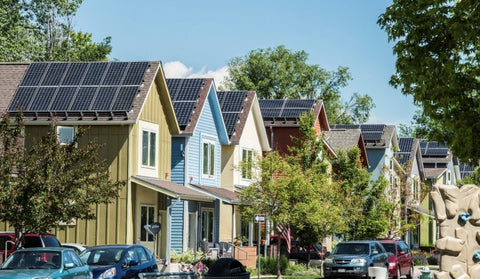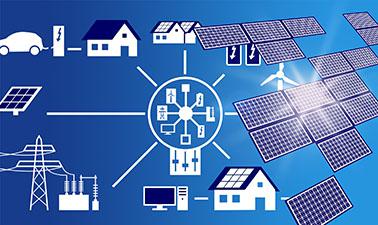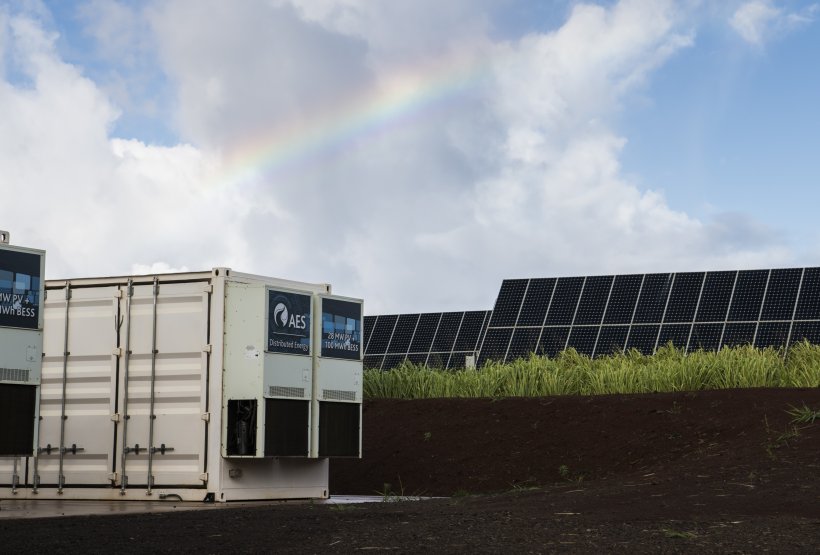
Simply put, we need a reliable and secure energy grid. Two ways to ensure continuous electricity regardless of the weather or an unforeseen event are by using distributed energy resources (DER) and microgrids. DER produce and supply electricity on a small scale and are spread out over a wide area. Rooftop solar panels, backup batteries, and emergency diesel generators are examples of DER. While traditional generators are connected to the high-voltage transmission grid, DER are connected to the lower-voltage distribution grid, like residences and businesses are.
Microgrids are localized electric grids that can disconnect from the main grid to operate autonomously. Because they can operate while the main grid is down, microgrids can strengthen grid resilience, help mitigate grid disturbances, and function as a grid resource for faster system response and recovery.
DISTRIBUTED ENERGY RESOURCES
Solar DER can be built at different scales—even one small solar panel can provide energy. In fact, about one-third of solar energy in the United States is produced by small-scale solar, such as rooftop installations. Household solar installations are called behind-the-meter solar; the meter measures how much electricity a consumer buys from a utility. Since distributed solar is “behind” the meter, customers do not pay the utility for the solar power generated.
The cost of owning DER varies from state to state and among utility companies. One way the electric bill is determined is through net metering, where utilities calculate the total power generated by the customer’s solar system and subtract it from the total power the customer consumes. Customers are credited for the amount of power they supply to the grid.
DER could fundamentally change the way the electric grid works. With DER, power is generated right where it is used and can be connected with other DER to optimize its use. Households and other electricity consumers are also part-time producers, selling excess generation to the grid and to each other. Energy storage, such as batteries, can also be distributed, helping to ensure power when solar or other DER don’t generate power. Electric cars can even store excess energy in the batteries of idle cars. DER can also include controllable loads, like water heaters or air-conditioning units that the utility can use to shift power consumption away from peak hours. While the grid was designed to generate power at large facilities and move it through the transmission grid to the distribution grid for consumption, DER enable local generation and consumption of electricity.
ISLANDS AND MICROGRIDS
Distribution grids are vulnerable to outages that can affect large regions and millions of people and businesses, particularly as a consequence of extreme, destructive weather events. When parts of the grid are equipped with DER, they can continue serving other loads on the same distribution network, meeting local needs with local generation. This is called islanding. Electrical systems that can disconnect from the larger grid, engaging in intentional islanding, are often called microgrids.
Microgrids vary in size from a single-customer microgrid to a full-substation microgrid, which may include hundreds of individual generators and consumers of power. Small, off-the-grid electrical systems are not a recent invention. Ships, military bases, remote outposts, and communities around the world have long relied on local generation and electricity management to meet their energy needs. DER make microgrids a more widespread option, because the means of energy production are now more easily obtained and sited in neighborhoods. Community-scale microgrids may provide resiliency and backup during and after disasters like hurricanes.
Technology is advancing to manage the risks caused by islanding with better control software and to provide grid services. Without the larger grid to help stabilize the power supply, an islanded grid could damage connected equipment or injure workers who think it is disconnected from power. For this reason, many solar energy systems are programmed to detect islanding and disconnect from the grid if it occurs. Beyond microgrids, some researchers are studying nanogrids—smart electricity systems on the scale of a single building.
BLACK START
Another way DER and microgrids can contribute to grid stability is by aiding “black start” processes, which turn power on after it has gone down. During a widespread electrical failure, electrical generators can be put offline. To come back online, many electrical generators require an external battery to start, just like a car engine does. To achieve this, utilities create black start plans, in which small generators start larger ones to steadily bring generation online. Throughout this process, service restoration must be well-timed, to ensure that generation and load are matched continuously. DER could become a valuable black start resource by allowing communities with microgrids to begin start-up processes on their own and provide the capacity required to start up larger generators.



